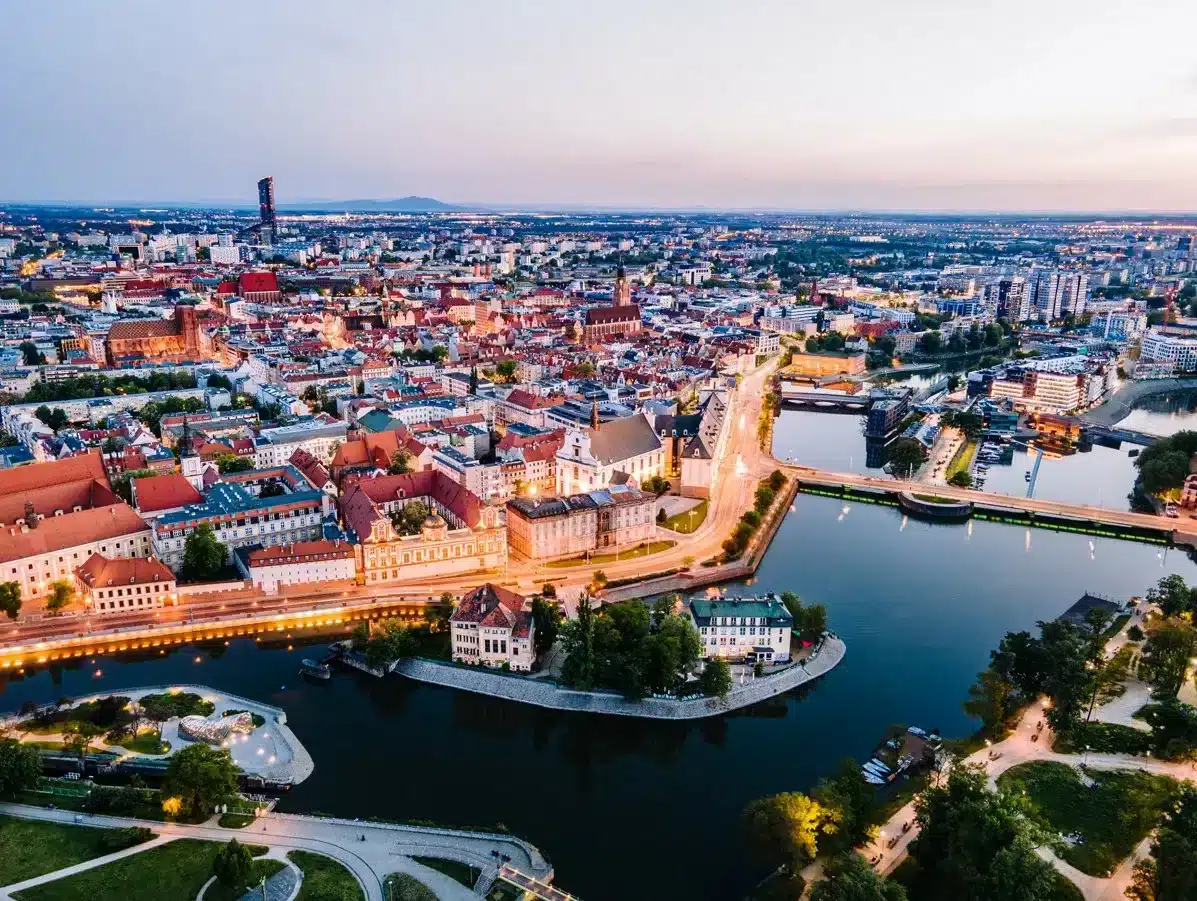At the end of the second quarter of 2024, the oldest office buildings in the regions had more than 40% of vacant surface space. The stabilisation of vacancy rate and limited developer activity shape the current real estate market, as suggested by the “At a Glance – Office Market in Regional Cities in the 2nd quarter of 2024” report prepared by BNP Paribas Real Estate Poland.
Office resources in the region expanded by five new facilities
As of June 2024, advanced office space resources in eight main regional markets outside Warsaw (Krakow, Wroclaw, Tri-City, Katowice, Poznan, Lodz, Lublin, Szczecin) were more than 6.73 million. sq m. The second quarter of 2024 saw five new office projects with a total area of 30,000 sq m obtain permission for use.
Contributions to the expansion of the office space were from B10 in Wrocław (14,000 sq m, Vastint), Villa Leon Rappaport in Łódź (7.7 thousand sq m, Bodex), Silk in the Tri-City (5.5 thousand sq m, LPP), Sky Garden in Szczecin (1.8 thousand sq m, Idea Invest), and Roko Office Point in Krakow (1.4 thousand sq m, Roko).
“The drop in developer activity in the regional office market, as in the capital, has many reasons like limited availability of land, higher interest rates, financing costs, and hybrid working influencing the reduction of leased area by some tenants,” explains Ewa Nicewicz, Senior Consultant, Office Space Rental Department, BNP Paribas Real Estate Poland.
Moreover, developers, execute their investment projects based on attracting key tenants from the early stages.
Moderate office demand
The total volume of lease transactions in the second quarter of 2024 was nearly 146,000 sq m, implying an increase of 4% compared to the previous quarter, but decline of 13% compared to the equivalent period last year. The largest interest in new areas was noted in Krakow (49,000 sq m), Tri-City (32,000 sq m), and Wroclaw (24,000 sq m).
BNP Paribas Real Estate Poland experts notice a trend in the reduction of leasehold areas by tenants.
“In regional markets, tenants are cautious about relocating because of high arrangement costs, and the prevalence of hybrid work arrangements led to a reduction of office space by an average of 25-30%. The average size of leased office space in regional markets in 2024 is 950 sq m, while in 2020 and 2021 it was over 1.7 thousand sq m,” adds Ewa Nicewicz.
In the structure of demand, lease renewals dominated, accounting for 51% of all transactions, while new contracts amounted to 38%. The biggest lease transactions of the second quarter of 2024 included the renewal of office space leases by Aptiv Services Poland in Enterprise Park F in Krakow (10,000 sq m), Takeda in Sterlinga Business Centre in Łódź (5.7 thousand sq m), and IBM BTO in Newton in Krakow (5,000 sq m).
Vacancies are and will be
As of the end of June 2024, in the eight major regional markets, there was over 1.19 million sq m of free office space available for immediate lease, corresponding to a vacancy rate of 17.7% (a decrease of 0.1 percentage point compared to the previous quarter, but an increase of 1.1 percentage point over the same period in 2023). This rate continues to remain at a high level, especially in Lodz (23.3%), Katowice (20.8%), and Krakow (20.2%).
According to BNP Paribas Real Estate Poland analysts, available unleased space will persist in the coming months, and the vacancies will be absorbed by the market even for the next 3-5 years. The vacancies are chiefly influenced by buildings older than 10 years, their unleased areas constitute more than half of the overall vacancy– most of this space is long term unoccupied.
Location or Modernisation?
In the eight main regional markets, 37% of the buildings are more than 10 years old. On the other hand, the youngest buildings, up to 5 years old, make up nearly 30%. The advantage of several decades old office buildings is their attractive and well-communicated location. However, with the growing availability of modern, certified space, meeting a range of ESG requirements, old facilities will require modernisation due to the significant risk that they will lose tenants without this type of investment.
“Modernisations could give these buildings a chance to remain attractive to tenants and meet their current needs. Additionally, this process is necessary for commercial buildings to achieve the goals of the Green Deal. Any actions taken in this direction are an investment in ESG values and a way to reduce operating costs,” emphasises Sara Romanowska, Consultant, Office Space Rental Department, BNP Paribas Real Estate Poland.
Investments of this type are crucial since, by the end of June 2024, the oldest office buildings in the regions had over 40% of vacant space.
Source: https://managerplus.pl/starzejace-sie-zasoby-biurowe-i-ograniczona-aktywnosc-deweloperow-w-regionach-92901
